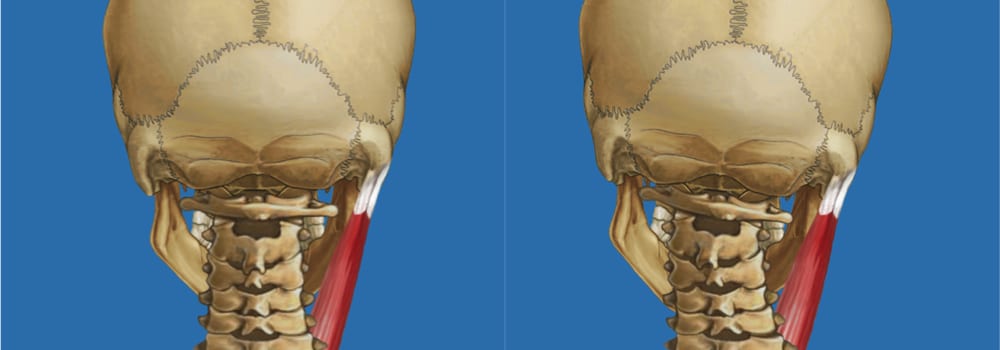Abstract
Headache, neck pain and symptoms of thoracic outlet syndrome are common complaints in patients with poor trunk function. When the upper thorax and shoulder girdle become restricted and/or poorly controlled more load is placed on the head and neck during everyday tasks. When the cranium is twisted due to external neuromuscular imbalances (i.e. asymmetric tone in SCM) or loss of tension ‘balance’ of the intra-cranial membranes (cerebellar tentorium, cerebral and cerebellar falx) (i.e. concussions, head hits etc), function of the upper thorax can be impacted.
Do you know how to determine if the upper thorax, neck or cranium is playing a role in the clinical presentation and if so what to do or where to begin treatment? A key feature of the Integrated Systems Model is how to determine the relationships between multiple sites of non-optimal alignment, biomechanics and control and decide where the best place is to intervene. This is called finding the primary driver and is task and individual specific.
The key concepts of the Integrated Systems Model (meaningful task analysis and finding the primary driver) will be highlighted during this lecture with specific application to the cranium, neck and upper thorax/shoulder girdle. Once the primary driver is determined for each meaningful task, vector analysis will confirm the underlying system impairment (articular, neural, myofascial, visceral) and thus determine the treatment prescription of what to release, align, connect and move (RACM).
At the conclusion of this lecture, you will understand the skills necessary to assess function of the cranium to the 4th thoracic ring (including the clavicle and scapula) and how to find the primary driver for meaningful tasks involving the head, neck and shoulder girdle. You will understand how to design a multimodal treatment program (including education, manual therapy, neuromuscular release, and movement training) to restore function and performance for any patient presenting with headache, neck pain and/or shoulder girdle pain.

Learning Objectives
Upon completion of this lecture you should have an understanding of:
- How the Integrated Systems Model provides a framework to find the underlying driver for the patient’s problem – whether this is pain, loss of stability, loss of performance, or other disability.
- Some key clinical tests for the cranium, neck, upper thorax/shoulder girdle to determine whether or not a patient is using an optimal strategy for function & performance for their chosen task and when there are multiple sites of impairment, how to determine the ‘primary driver’ or impairment to be addressed first.
- The clinical reasoning process required to determine if the cranium, neck, upper thorax/shoulder girdle is the primary driver for loss of optimal function.
- Key clinical tests for the articular, neural, and myofascial systems pertaining to the determined primary driver.
- The clinical reasoning process for the development of a prescriptive treatment program that targets interventions to various system impairments pertaining to the primary driver.
- The principles of ISM treatment techniques and movement training to release, align, connect & move the trunk/hips for restoration of better strategies for function & performance.

Very informative
Super helpful course with great visuals. This class makes me want to take an in person course in order to learn and palpate in person
Very thought provoking.
very thought provoking
Cranium/Neck/Upper Thorax Lecture
Excellent information. Excellent presentation. Excellent teaching. A spectacular synopsis of a game-changing therapeutic framework in one hour. Thank you!!!
I was lucky enough to find ISM in 2010 which led me eventually to training with Barral Institute and its curriculum. Over the last 5 years I used much more listening hand and I feel I have forgotten my roots as a physiotherapist. This lecture combines both systems: ISM and Barral Institute where ISM provides solid clinical reasoning and Barral Institute listening hand for vectors to release and then realign, connect and move it. I am sure I can only build up my clinical reasoning to improve my treatment skills.
great course
very informative! I’m glad I have watched this.
Great information
It was presented clearly
I loved the link between the cranium and neck
Thank you
Really interesting and I want to learn more!
I'm blown away
Thank You!
Great as always
Brain fog
I feel like I have clarity after listening to this 1 hour lecture, and have never quite understood the concept of brain fog of which i have several patients complaining, and will be keen to test out the corrections once i’ve tried to identify the primary drivers. Great lecture, really informative and easy to follow. I am not sure of the eye being behind, but will clarify at the course in a few weeks hopefully.
Cranium, Neck and Upper Thorax Course
The handouts were a great place to take notes and make reminders for myself.
The lab inserts were clear, thought provoking and showed many different congruent and non congruent situations.
The definition of drivers, co-drivers was simple and understandable.
The anatomy was spectacular.
Meaningful tasks were clinically relevant.
Excellent in every way.
Making practical sense throughout the whole video and a chance to reflect on my body as well as other patient’s drivers. The biomechanical pictures were great maybe a freeze frame so we can view it longer for us slower folks visually. Would have liked the hand out for this lecture. Is there one linked that I missed?